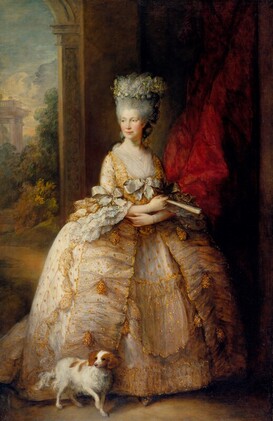|
The American national anthem, "The Star-Spangled Banner," is a symbol of national pride and patriotism. But do you know the story behind its creation? Let's take a trip down memory lane to explore the origins of this iconic song.
It all began during the War of 1812, when British forces were attacking the city of Baltimore. Francis Scott Key, a lawyer and amateur poet, witnessed the battle from a British ship where he had gone to negotiate the release of an American prisoner. As the battle raged on, Key saw the American flag still flying over Fort McHenry and was inspired to write a poem about the experience. "The rockets' red glare, the bombs bursting in air, gave proof through the night that our flag was still there," Key wrote in his poem. It was later set to the tune of a popular British song, "To Anacreon in Heaven," and became known as "The Star-Spangled Banner." The song was an instant hit, and by the end of the 19th century, it was played at public events across the country. In 1916, President Woodrow Wilson officially recognized it as the national anthem, and it has been a staple of American culture ever since. But did you know that the original poem was actually four stanzas long, and we only sing the first one? The other three stanzas are rarely performed or even known by most Americans. As historian Marc Ferris points out, "The Star-Spangled Banner" is more than just a song – it's a symbol of American resilience and perseverance in the face of adversity. "It's a reminder that we have overcome great challenges in the past and will continue to do so in the future," he says. Today, "The Star-Spangled Banner" is still sung at sporting events, political rallies, and other national gatherings. It may not be everyone's favorite song, but it remains a powerful representation of the American spirit. As Key himself wrote in the final stanza of his poem, "O say does that star-spangled banner yet wave, O'er the land of the free and the home of the brave?" It's a question we still ask ourselves today – and the answer, of course, is a resounding yes. Written by Versus History Guest Blogger Emilia Urquhart.
0 Comments
So, England has a new Queen-Consort in Queen Camilla. History tends to overlook the consort, focusing its attention (for better or worse!) on the hereditary monarch. However, while there have been many performing the role of Consort - some, like Anne Boleyn losing their heads in the process - there is (at least!) one successful example for Camilla to draw inspiration from. Queen-Consort Charlotte of Mecklenburg-Strelitz was a remarkable woman who left an indelible mark on England during her reign as queen-consort from 1761 to 1818. Her legacy as a patron of the arts, philanthropist, and supporter of education lives on to this day. Given that she arrived in England for the very first time as wife to the newly coronated King George III from Central Europe, her achievements are perhaps all the more remarkable. Even more so, perhaps, when we consider the ill-fated arranged marriage just over two hundred years previously between another King of England (Henry VIII) and Anne of Cleves, who, like Charlotte, could speak little - if any - English. Like Anne, Charlotte originated from Europe and had never stepped foot in England previously, arriving in England for the purpose of a Royal Marriage. With this in mind, we will explore some of the most notable achievements of Charlotte during her time as Queen of England. One of Charlotte's most significant accomplishments was her patronage of the arts. She was a passionate supporter of the Royal Academy of Arts and counted artists such as Joshua Reynolds and Johann Zoffany among her close friends. Reynolds painted numerous portraits of Charlotte, including one of her wearing a simple dress and no jewels, which became a sensation at the time. As art historian Elizabeth Einberg notes, "Charlotte's interest in art was genuine and lasting...she made a considerable contribution to the artistic culture of her day." In addition to her patronage of the arts, Charlotte was deeply committed to philanthropy and improving the lives of the less fortunate. She founded numerous organizations aimed at helping those in need, including the Royal Female Orphanage and the Royal General Lying-In Hospital. She also supported the establishment of schools for underprivileged children, including the Asylum for Female Orphans and the Foundling Hospital. As historian Flora Fraser notes, "Charlotte was the first queen to become actively involved in philanthropic work." Her philanthropic work left a lasting impact on society and helped to shape modern England.
Charlotte's commitment to education was also a significant part of her legacy. She was an advocate for the education of women and supported the establishment of schools and institutions for women's education, including the Queen's College in London. She also encouraged her daughters to pursue an education and provided them with a strong foundation in the arts and sciences. As her daughter Princess Sophia once said, "My mother was very much for the education of women, and she set us all an example in that respect." Finally, Charlotte was known for her strength and resilience in the face of adversity, including her husband's bouts of mental illness. During one of George III's episodes, Charlotte assumed the role of regent and provided steady leadership for the country. As historian Julia Baird notes, "Charlotte's steadfastness and courage during these years was crucial in maintaining stability and continuity in a time of great uncertainty." In conclusion, Queen-Consort Charlotte of Mecklenburg-Strelitz was a remarkable woman whose achievements as Queen of England continue to be celebrated to this day. Her patronage of the arts, philanthropy, and support for education left a lasting impact on society and helped to shape modern England. Camilla has strongly indicated that she shares Charlotte’s charitable ethos and dispositions. Charlotte’s strength and resilience in the face of adversity were an inspiration to all who knew her, and her legacy serves as a reminder of the power of leadership and dedication. Camilla will, we hope, emulate this and we wish her every success in the role. Written by Versus History Guest Blogger Ayesha Gill. |
Categories
All
Archives
April 2024
|



 RSS Feed
RSS Feed